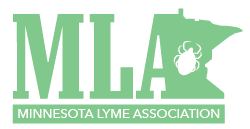Summary
The meeting primarily focused on the discussion of alternative treatments for Lyme disease and other tick-borne illnesses. The participants discussed the potential benefits and drawbacks of antibiotics, and highlighted the need for alternative treatments due to antibiotic resistance. They also discussed the effectiveness of treatments such as dysolfram and methylene blue, and the importance of individualizing treatment. The conversation also touched on the use of red light therapy and methane blue, with potential benefits and side effects discussed. Towards the end, they recommended several providers for complex cases and thanked everyone for their attendance.
Alternative Treatments for Lyme Disease
Karen discussed the role of parasympathetic response in healing and the potential benefits of certain chemicals in boosting healing pathways. She also mentioned the effectiveness of treatments like dysolfram and methylene blue in her practice. Laurie then took over the discussion, emphasizing the need for alternative treatments due to the limitations of antibiotics in treating lyme disease. She explained that antibiotics may not be effective because the bacteria can change forms or hide in biofilms, making them resistant to treatment. Laurie also highlighted the drawbacks of antibiotics such as allergic reactions, destruction of the microbiome, and antibiotic resistance. She further discussed the use of high throughput testing to find alternative treatments, and the effectiveness of disulfiram in killing Borrelia, a bacteria causing lyme disease.
Disulfam Lyme Disease Treatment Discussion
Laurie discussed the use of disulfam for treating Lyme disease. She noted that while the drug has significant side effects, it can be effective for those who aren’t responding to or have relapsed after antibiotic treatment. The drug requires careful monitoring and adjustment, with dosage increases happening every two weeks due to its long half-life. Patients need to be informed about potential side effects, such as liver inflammation, neuropathy, and psychiatric symptoms. Laurie stressed the importance of individualizing treatment and adjusting the dose according to the patient’s tolerance. She also addressed misconceptions about the drug, emphasizing that it can be effective and safe if used appropriately.
Methane Blue: Uses, Properties, and Potential Side Effects
Laurie discussed the properties and uses of methane blue, a blue dye with known antimicrobial effects. She mentioned its use in treating malaria, recurrent bladder infections, and a condition called methemoglobinemia. Laurie also noted its ability to improve mitochondrial function, enhance brain function, and potentially help with depression. She shared that she has started using it at low doses for patients, particularly for those with Bartonella. However, she also cautioned about potential side effects including serotonin syndrome, bladder pain, and the fact that it can turn everything it touches blue.
Methane Blue Light Therapy Discussion
Laurie and Karen discussed the use of methane blue and red light therapy, with Karen elaborating on the dosage and its effects. Karen explained that she uses a dosage of 1.5 to 4 milligrams per kilogram based on body weight, and shared her personal experience of using the treatment. She also mentioned the potential benefits of methane blue in increasing mitochondrial function, its use in various neurocognitive conditions, and its successful treatment of pruritis ani. However, she expressed reservations about its potential to decrease nerve endings.
Methylene Blue Availability and Usage Discussion
Karen and Laurie discussed the availability of pharmaceutical-grade methylene blue in the Twin Cities. Laurie suggested contacting their compounding pharmacy contacts, while Karen mentioned a chiropractor who sells a product called Mitrozan. They also talked about the potential benefits of combining methylene blue with red light therapy. Karen shared her personal experience with methylene blue and mentioned two compounding pharmacies in Texas and Florida that make it. Laurie cautioned about the potential for serotonin syndrome with methylene blue, but Karen reassured that this is more likely at higher doses. They also touched upon tips for reducing nausea with methylene blue, such as taking it with food or mixing it with powdered vitamin C.
Disulfam Lyme Disease Treatment Discussion
Laurie and Karen discussed the benefits of disulfam as a treatment for Lyme disease, emphasizing that it does not harm the gut microbiome like antibiotics do. Laurie mentioned her plans to create a consultation service to assist those who are less experienced with treating Lyme patients. Karen shared her personal experience with disulfam, noting its energizing effects and its ability to avoid disrupting the gut microbiome. However, she also cautioned about potential liver function issues, particularly for those with a history of alcoholism. Anna asked about combining disulfam with methylene blue, prompting Karen to explain that they can be taken concurrently without issue. The discussion concluded with Anna sharing her own successful use of methylene blue.
Red Light Therapy and Health: Discussions and Perspectives
Anna discussed her personal experience with using a red light therapy device along with methyl and blue supplements, which she believes has improved her adrenal resilience and energy levels. Karen elaborated on the science behind photo bio regulation and its potential benefits, including anti-aging and skin hair. Laurie shared her perspective on the use of Dapsone, expressing her discomfort with its protocols and expenses. The team also highlighted the potential use of red light therapy for various health issues, including Covid-19.
Tick-Borne Illnesses and Lifestyle Changes
Laurie and Karen discussed the challenges faced by Sue, who is suffering from tick-borne illnesses and neuropathy. Laurie highlighted the potential for such illnesses to remain dormant in the body and re-emerge, suggesting that the immune system’s ability to overcome the infection should be investigated. Karen emphasized the importance of lifestyle changes, such as dietary modifications and reducing caffeine intake, in improving overall health and potentially helping to manage infections. Justine shared her personal experience of developing discoid eczema after treatment for mold and Bartonella, prompting further discussion about potential triggers and treatments.
Treatment Process and Interactions Discussion
Laurie and Karen discussed the treatment process, which includes a gradual dosage increase over 2-3 months, followed by a tapered discontinuation process over a month to avoid mood changes. They also discussed potential interactions between mold toxicity and tick-borne illnesses. The conversation then moved to the use of disulfiram, a drug typically used in alcohol use disorder treatment, for managing tick-borne illnesses. They discussed the potential for herbal supplement use while taking disulfiram, and the compatibility of various light box models for phototherapy. Anna and Karen shared their personal experiences with different light box models and treatment processes.
Therapy Modalities and Melatonin Usage
The meeting primarily focused on the discussion of different therapy modalities, specifically near infrared, far infrared, and red light therapy. Karen elaborated on the distinct properties and applications of each type, highlighting the need for eye protection during near infrared therapy and the use of far infrared in saunas. Laurie shared anecdotal evidence of using red light therapy to treat infections. The conversation also touched on the use of melatonin, with Karen explaining its role in enhancing immune function, promoting deeper sleep, and improving energy levels during the day. The potential risks of long-term melatonin use, such as the body’s reduced ability to produce the hormone naturally, were also discussed.
Understanding Lyme Disease and Self-Healing Capabilities
Karen and Laurie discussed the importance of understanding the body’s self-healing capabilities, with Karen emphasizing that “deep healing can happen” if people get out of the way of their bodies. Laurie then took a question about what to do if someone gets a tick bite. She recommended visiting a clinician or urgent care with a handout from her website and suggested taking antibiotics depending on the symptoms. They both stressed the importance of treating acute Lyme disease aggressively to prevent chronic Lyme disease. They also discussed the challenges of testing for Lyme disease due to its ability to evade detection, and suggested trying a trial of antibiotics if a clinical diagnosis is strongly suggested. Towards the end, they recommended several providers for complex cases and thanked everyone for their attendance.







